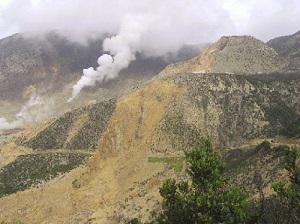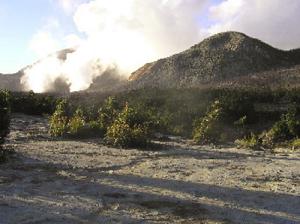Endah Sulistyawati
Revealing the biodiversity and its threats in Mount Papandayan, West Java

A spectacular view of landscape near the crater. Huge land ‘scar’ was created following a big landslide preceding the eruption in 2002.
The tropical mountain forests in Java play a critical role as biodiversity refuges given the fact that most lowland tropical rainforests in this island have been converted to other uses. Despite this critical role, only a few of them are managed well in a ‘secure’ status such as a national park. As with other forested areas in Indonesia, mountain forests in Java currently face serious threats including conversion to other uses such as logging, over-harvesting of non-timber forest products and animal poaching.

Pondok Saladah, the site where the vegetatation was previously destroyed by 2002 eruption.
This project aims to provide up to date information on the biodiversity status of Mount Papandayan, a mountain forest that is not designated as national park, and will also identify threats to this biodiversity. The results of the project will be actively disseminated to relevant government agencies and conservation organisations for appropriate action. Booklets will also be published for local communities to raise their awareness on mountain conservation.